Leaving Austria behind for good on my roadtrip last summer, I drove back into Germany and headed to the third largest freshwater lake in Europe, Lake Constance or Bodensee as it’s called in German. The lake itself is worth seeing for its gorgeous turquoise waters and mountainous backdrops at the edge of the Alps. But there are also plenty of interesting sights along the banks of the lake, some of which I sought out as I made my way west.
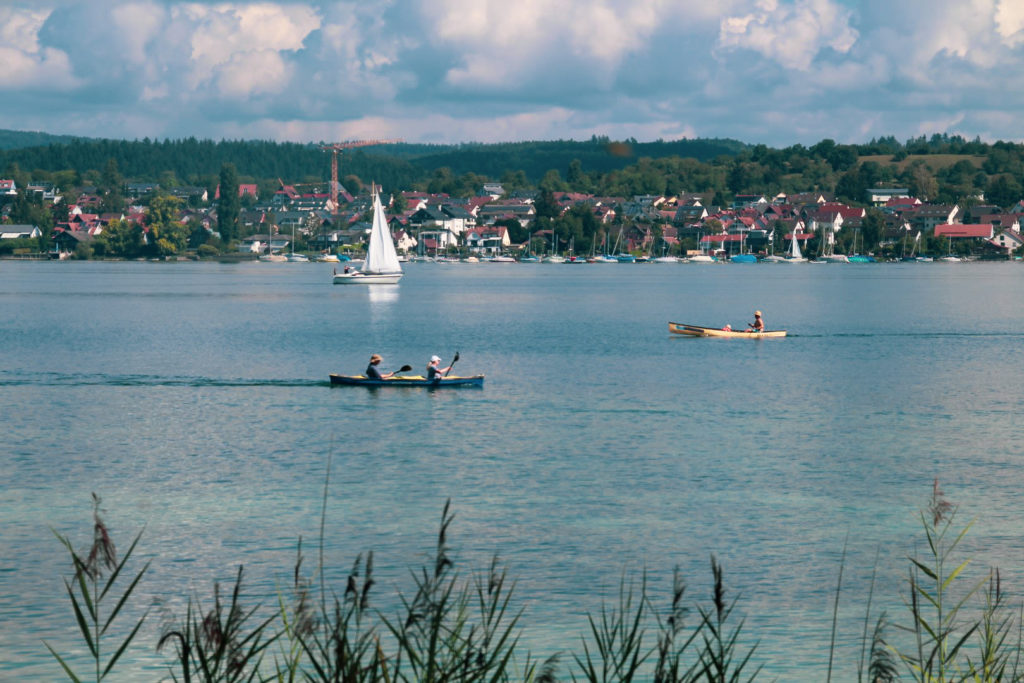
A visit to the Lake Dwelling Museum Unteruhldingen
A series of 111 prehistoric settlements with stilt houses, built between 5000 and 500 BC on the edges of lakes, rivers and wetlands, have been discovered around the Alps and sub-alpine regions. Switzerland holds the most sites, but they are also found in Italy, Germany, France, Austria and Slovenia. These dwellings were built on marshy lands, set on piles to protect against flooding, although they did eventually become waterlogged and remained so for thousands of years, which secured exceptional conservation conditions for organic materials. For this reason, the discovery of the dwelling sites have made it possible to study the early agrarian societies in Europe in detail.
The sites have provided rare opportunities for understanding entire prehistoric villages as well as detailed understandings of trade routes for resources such as flint, gold, amber and pottery. Among other discoveries, some of the oldest wooden wheels in the world from around 3,400 BC, as well as the oldest textiles in Europe from around 3,000 BC, came out of these sites. In 2011, UNESCO recognized the importance of the pile dwelling sites for our understanding of the onset of agriculture in Europe, the dawn of modern society, and included all 111 sites to the World Heritage List.
Although the original site is no longer visible in Unteruhldingen, the small town on the banks of Lake Constance holds the biggest and most informative museum related to the pile dwellings, which is also one of the oldest open-air museums in Europe. Of course, as an archaeologist and Stone Age nerd, I just had to visit this museum! I’d seen it in documentaries and movies many times, so it was rather surreal to finally see it with my own eyes.
I took my time as I walked along the wooden footbridges, trying to imagine what life was like there in prehistoric times. The open-air museum is beautifully exhibited and holds 23 reconstructions of stilt houses from the Neolithic and up to the Iron Age, ranging from 4000 BC to 850 BC. It does a wonderful job of bringing an ancient sunken world back to life, as well as telling the story of the archaeological discoveries with a small artifact museum.
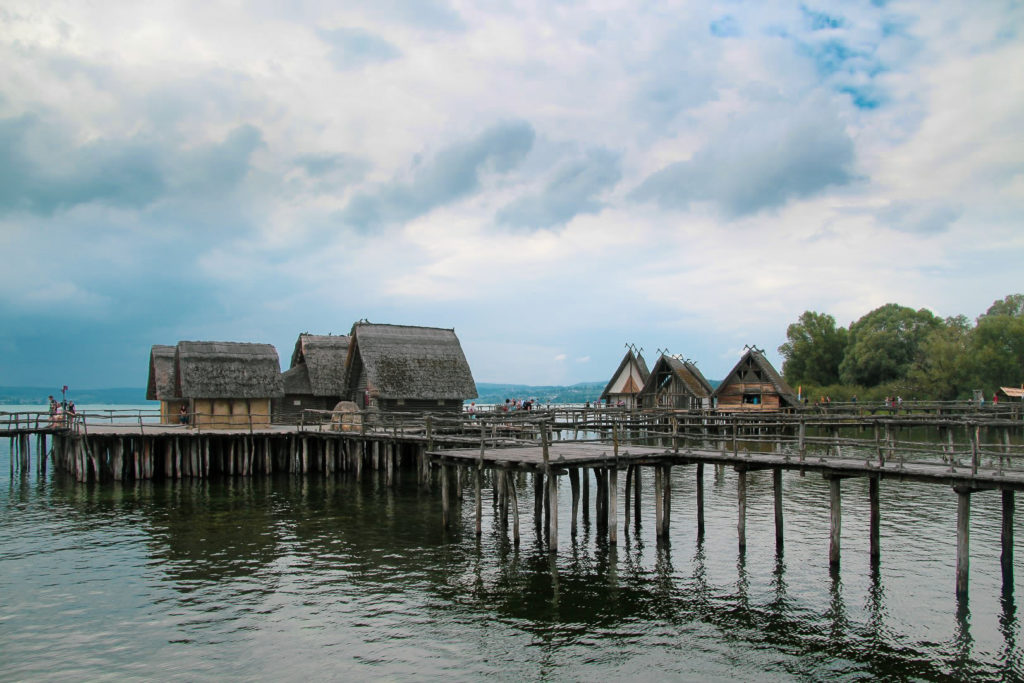
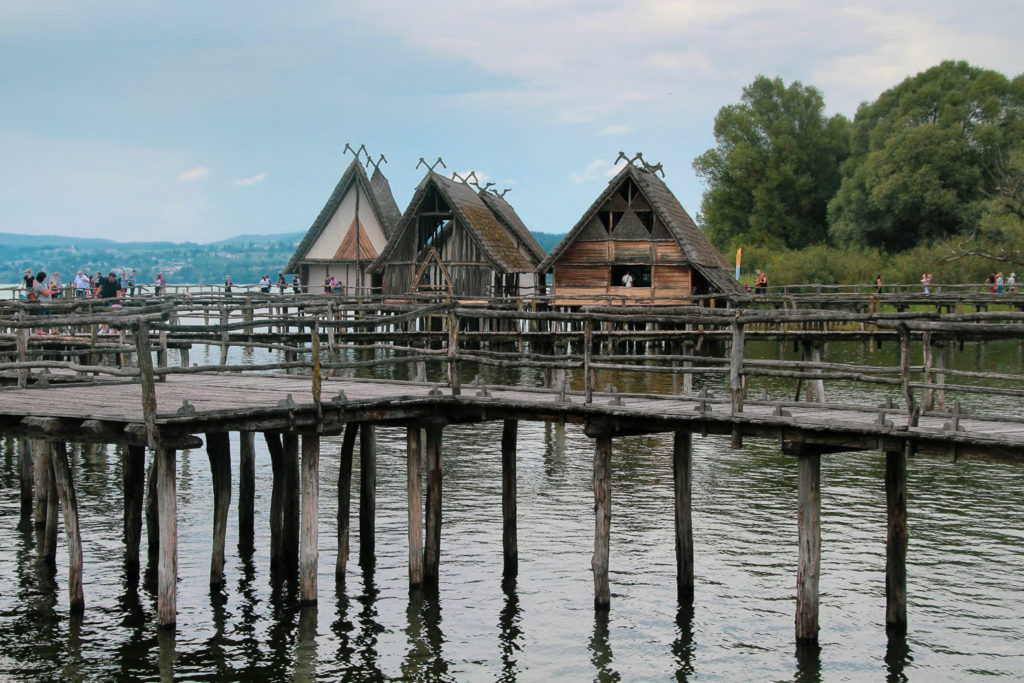
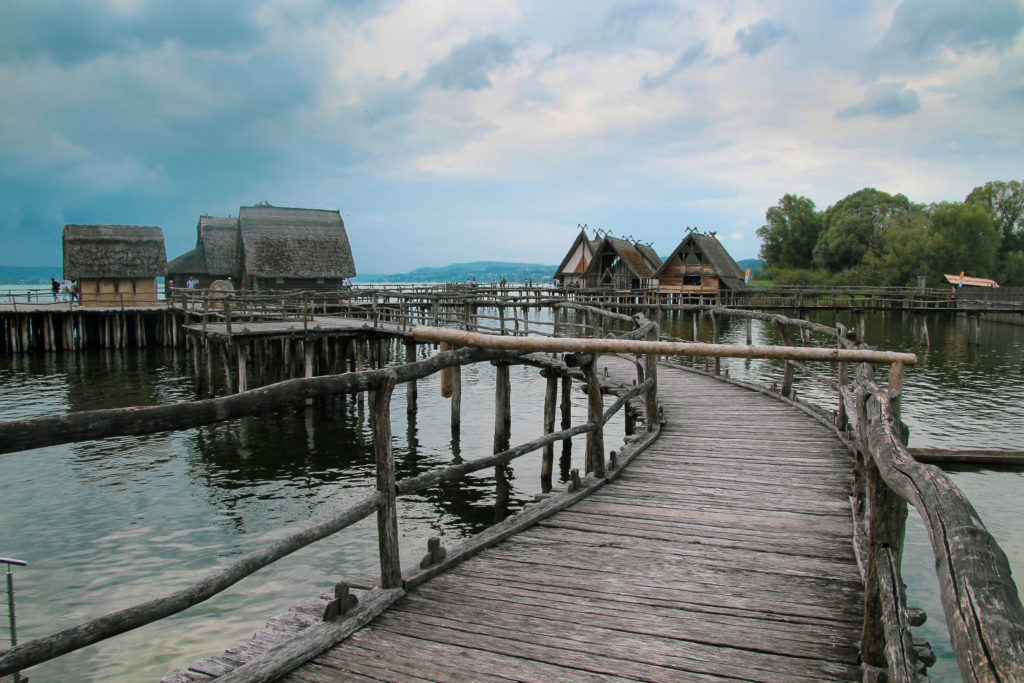
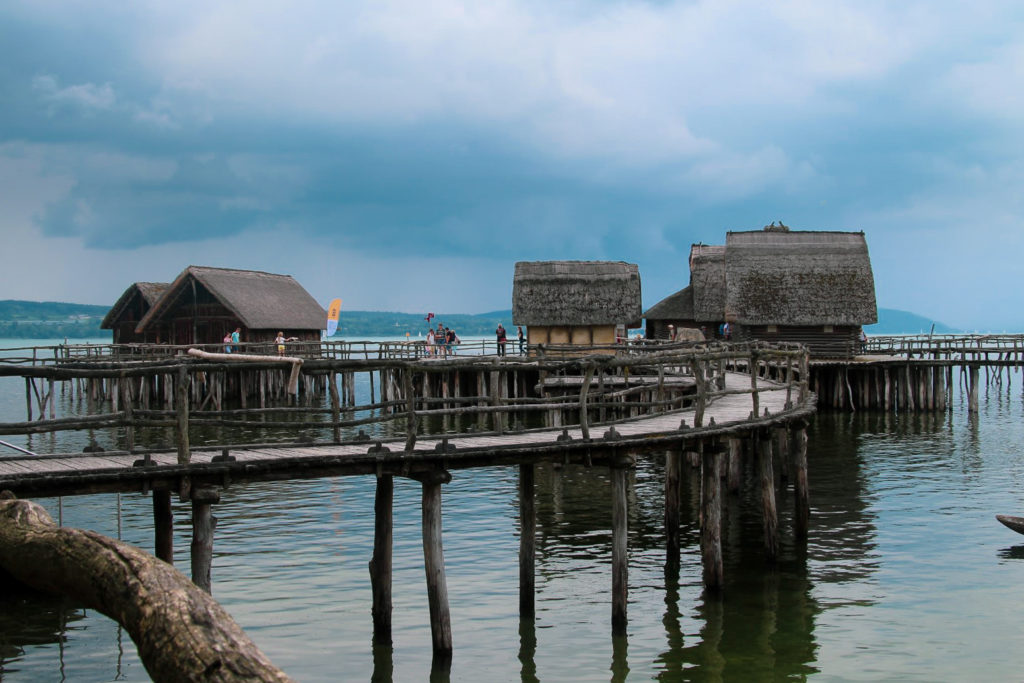
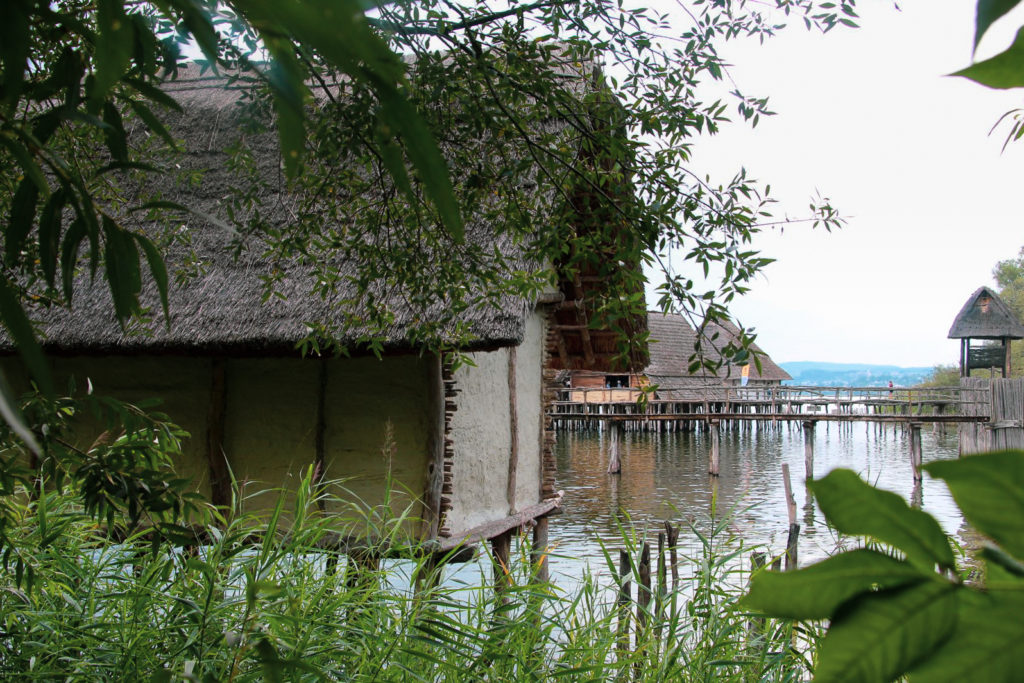
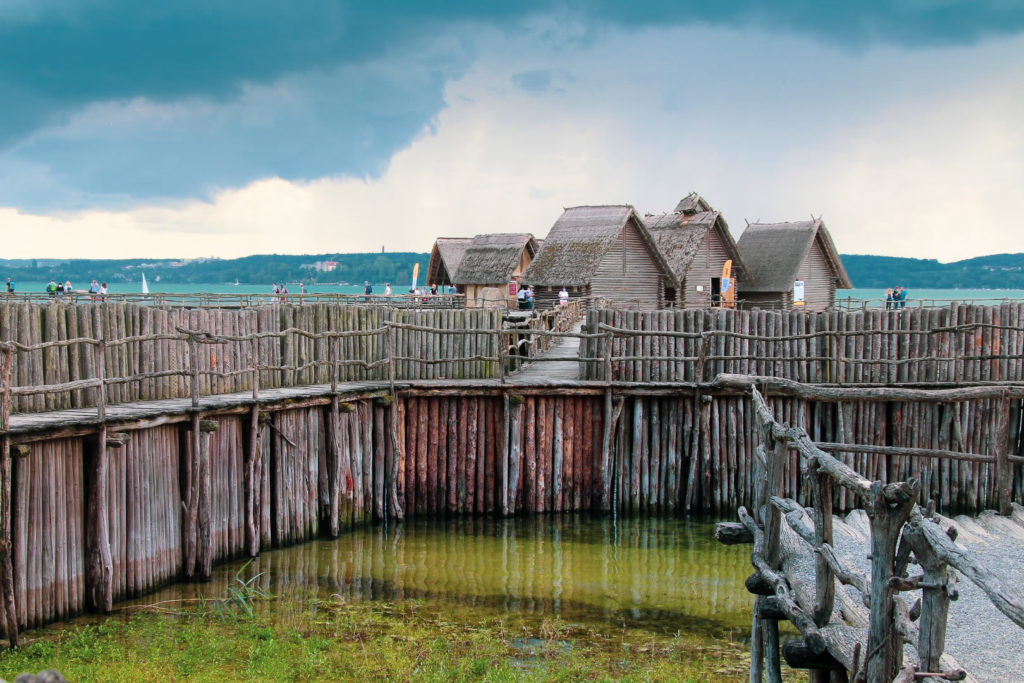
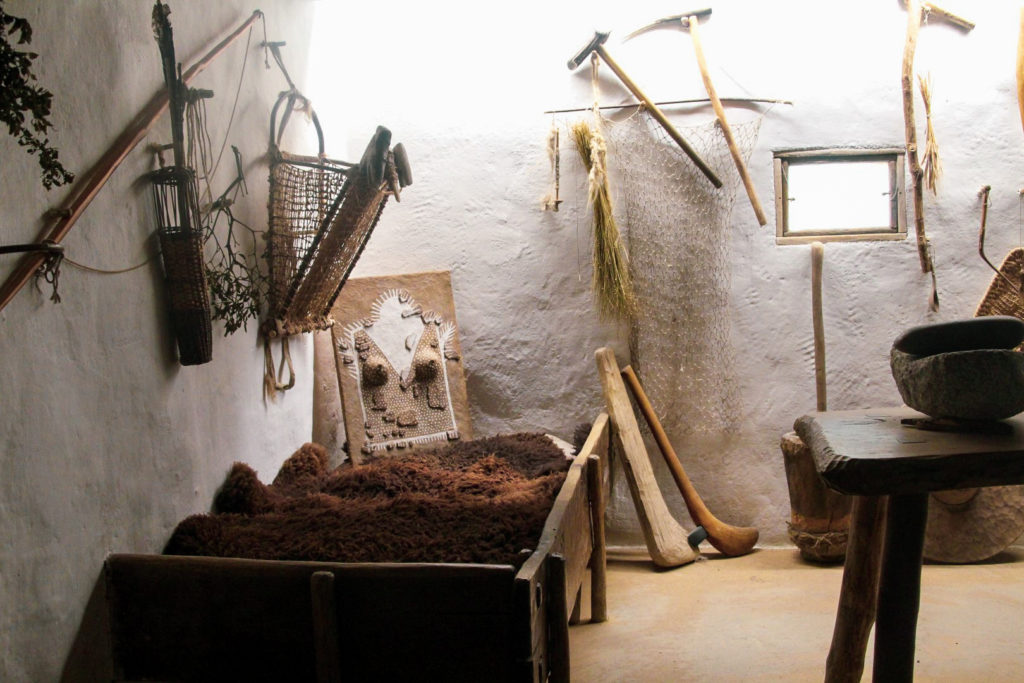
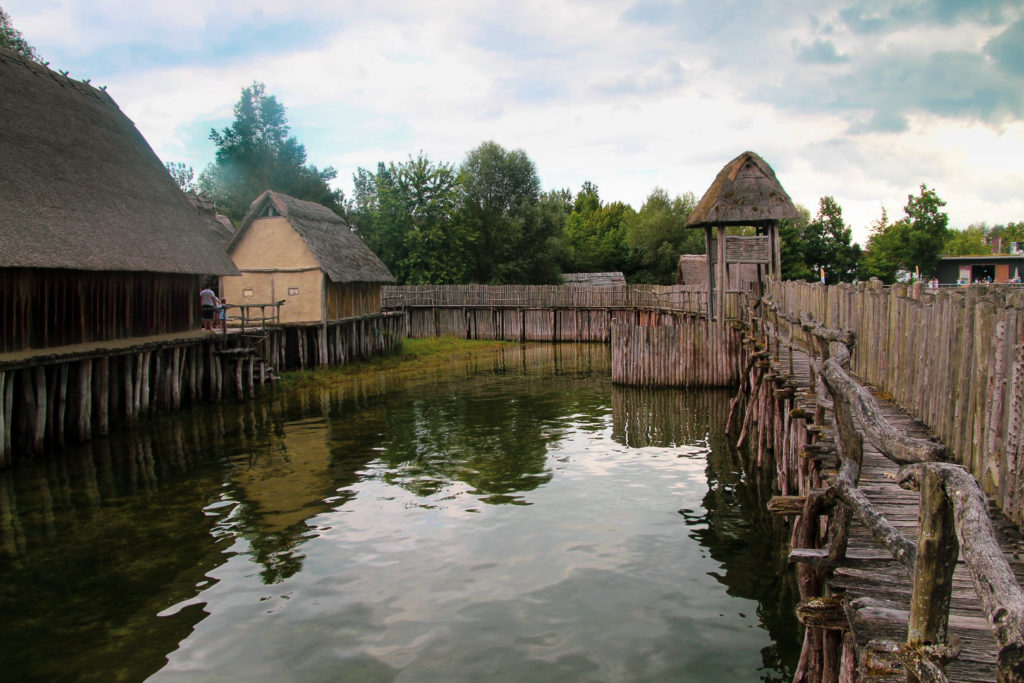
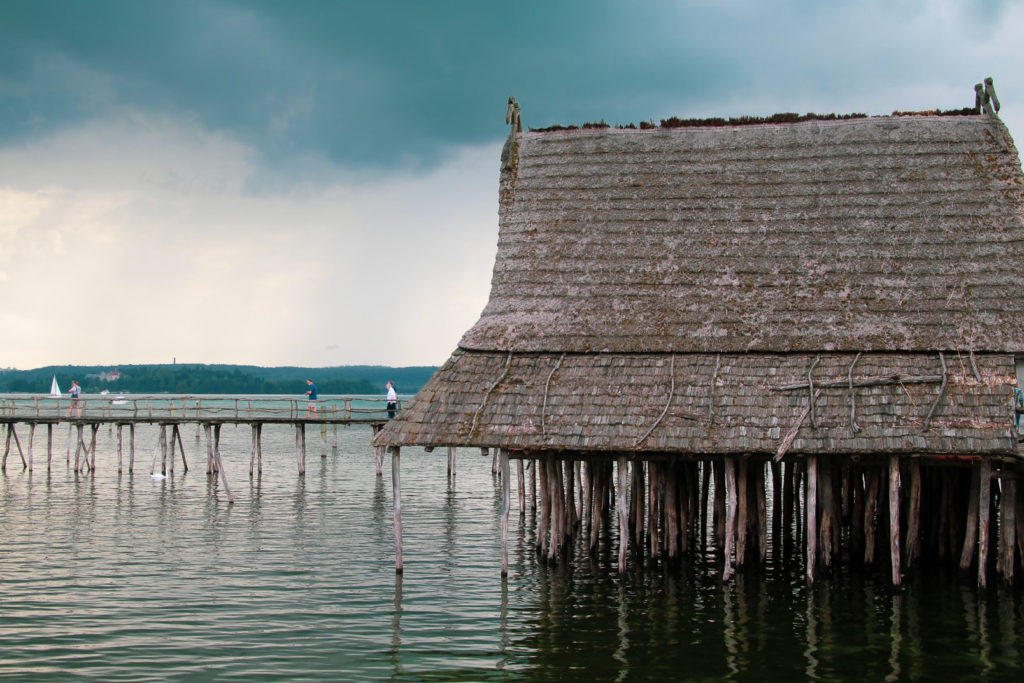
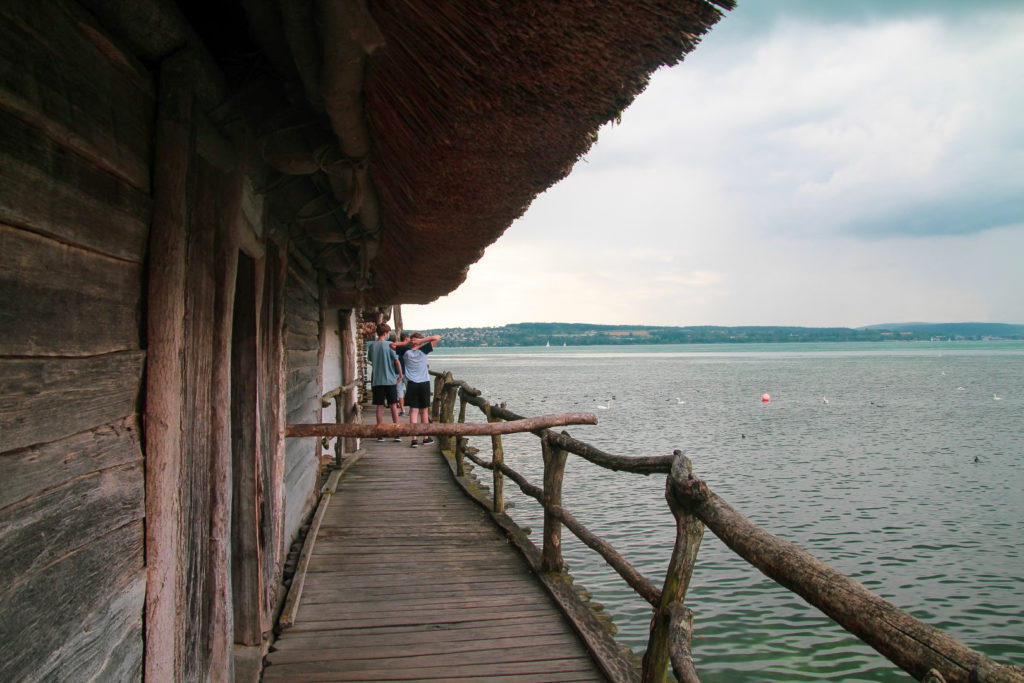
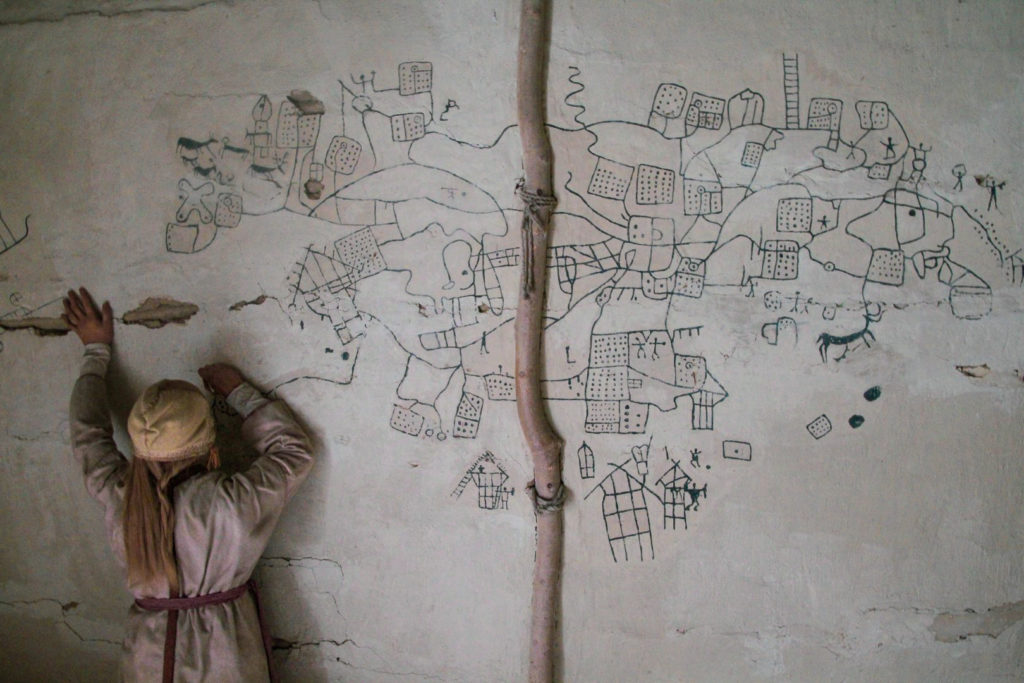
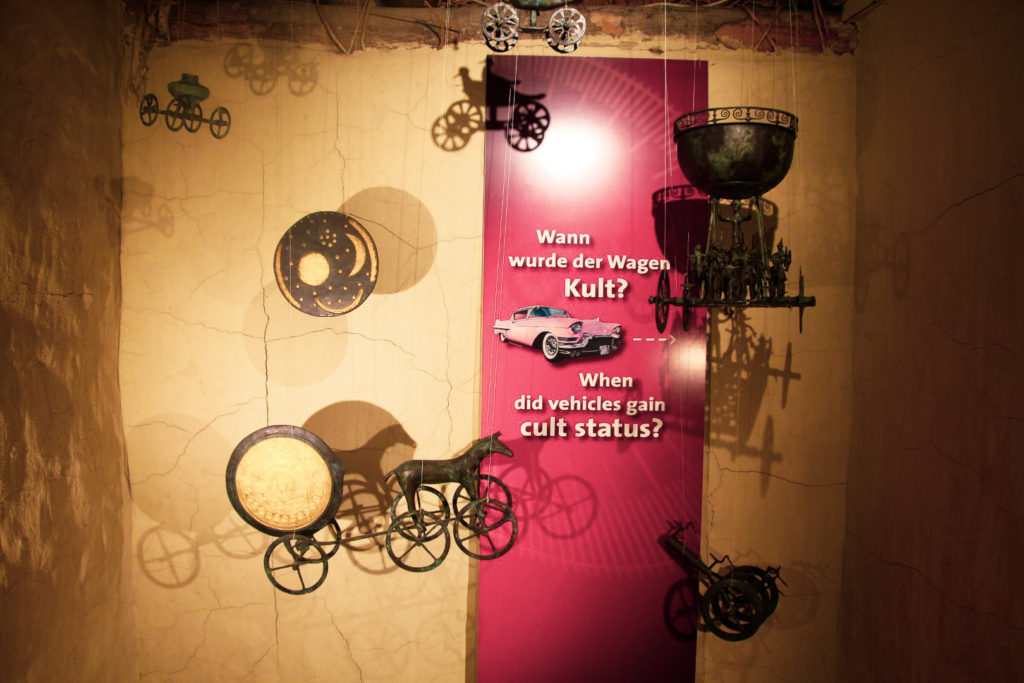
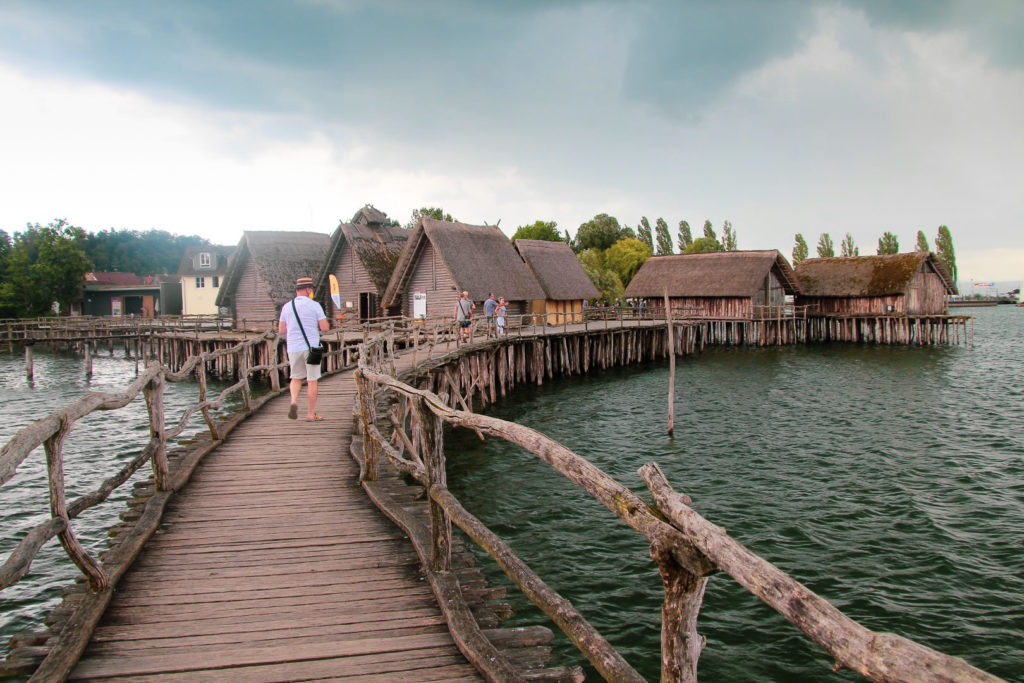
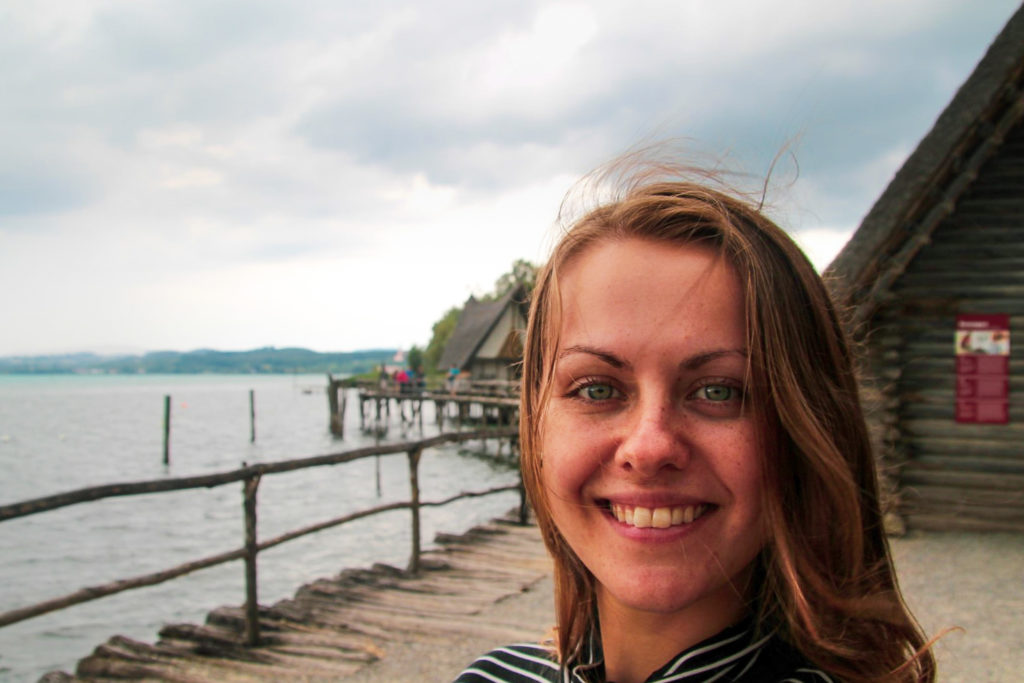
After spending a few hours taking in every detail of the open-air museum, I made my way down to the harbour, about 500 metres south of the museum, where the original pile dwelling site of Unteruhldingen-Seewiesen once stood.
Although it’s now submerged and there’s nothing but the lake to see, I like knowing exactly where the archaeological site itself stood. Oftentimes, open-air museums are built directly on the archaeological site that they represent, but I think that’s a shame as that means a definitive destruction of the original site. Moving the museum 500 metres from the original site certainly made no difference for the understanding of the site!
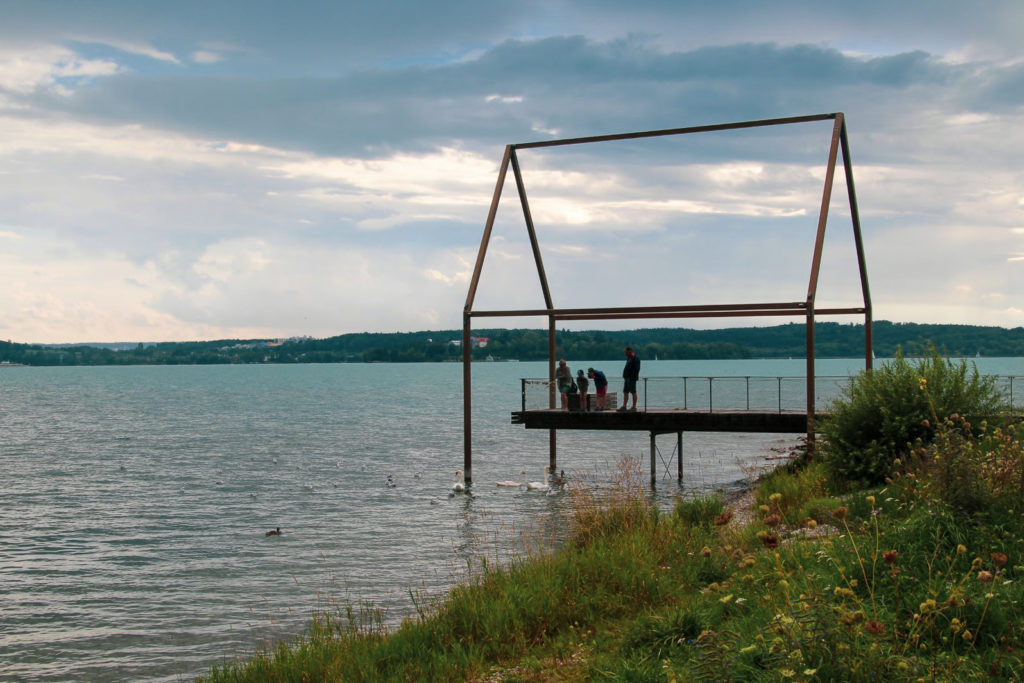
A wonderful evening on Reichenau Island
It was getting late and I still hadn’t found a place to stay for the night. I drove towards Reichenau Island, which I wanted to explore the following day, hoping to find a free or cheap place to park for the night. I tried a few campsites, but they were all full. In the end, I drove over the causeway and ended up on the island itself, and was lucky enough to find a small parking lot for 6 euros for the night. Once again, I was a lone car amongst several campervans and motorhomes…
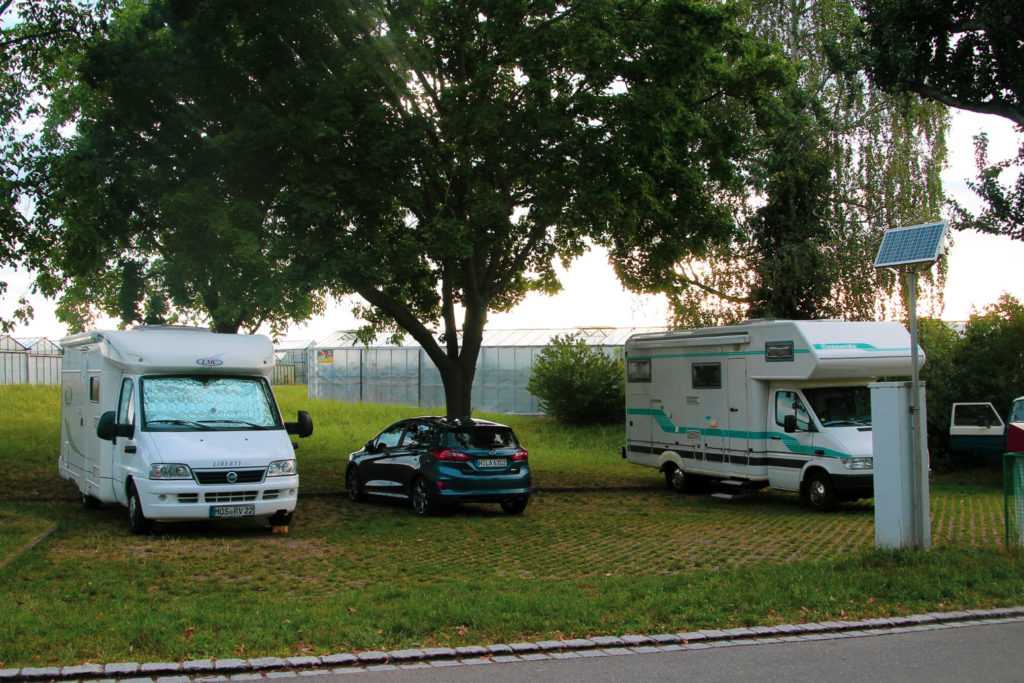
The evening was beautiful and I still had half of my 15,000 daily steps to do, so I headed out for a long walk after securing my overnight spot. I knew little about the island beforehand, other than the fact that it’s a UNESCO World Heritage Site due to the former Benedictine Abbey of Reichenau which was an important religious and cultural institution between 800 and 1000 AD. Three churches built between the 9th and 11th centuries are the only remains of the old monastic tradition. My route took me past one of these churches, which was beautifully illuminated by the soft light of golden hour.
I also walked past several vegetable farms, another thing that the island is famous for. I continued along the coast as the sun approached the horizon and painted the sky a beautiful mix of pink and orange. I found a bench to sit and eat my dinner while watching the spectacle. The last sunrays of the day disappeared beneath Lake Constance, and it was time to head back to the car for another night in the passenger seat.
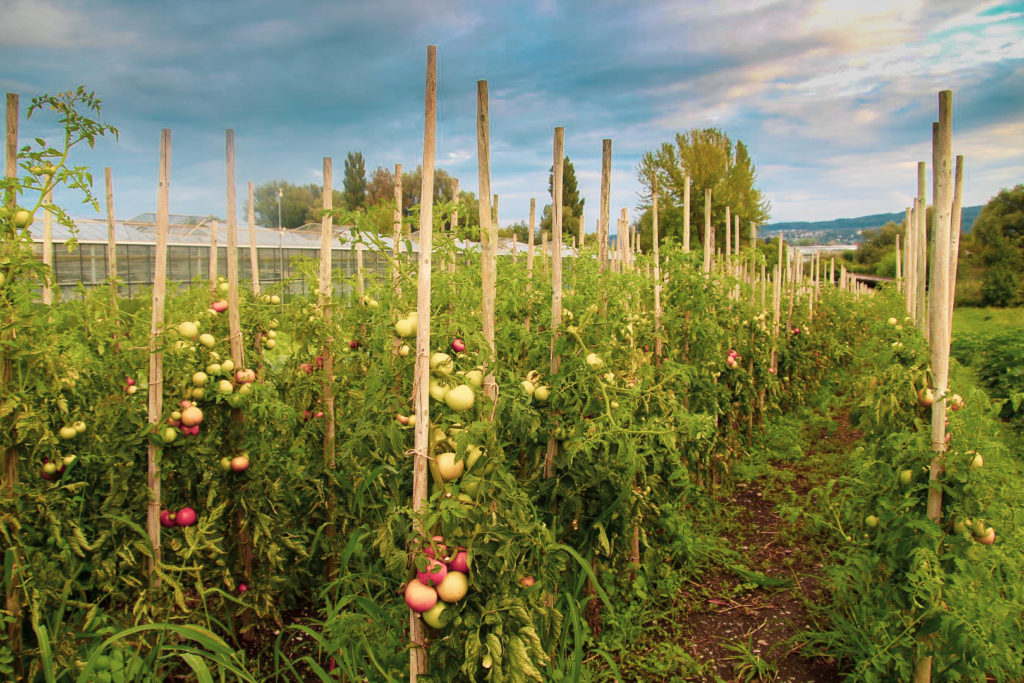
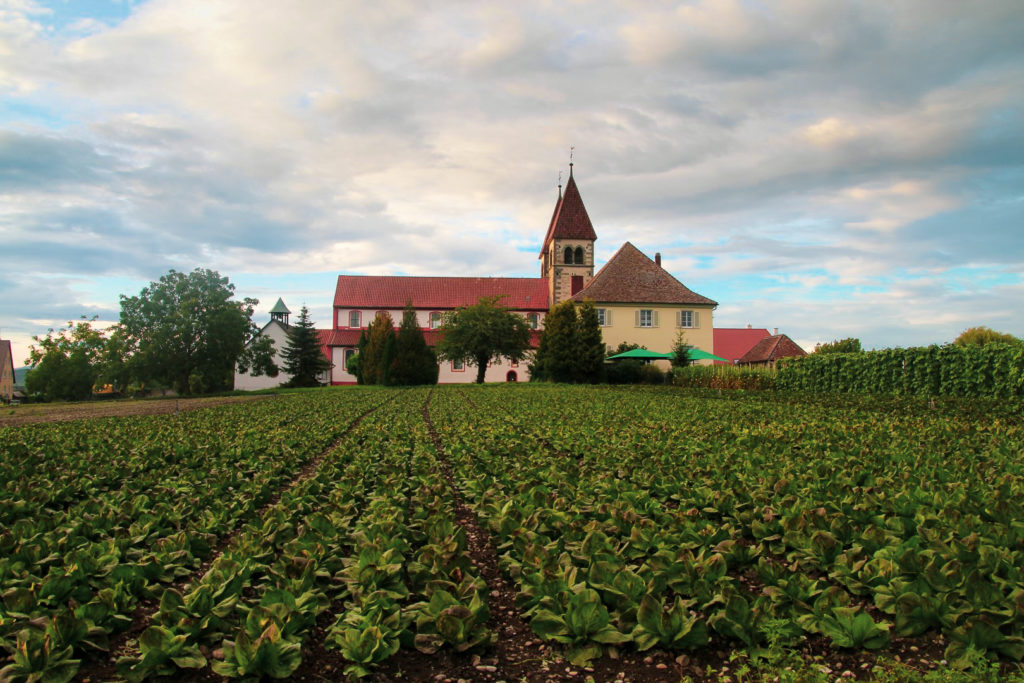
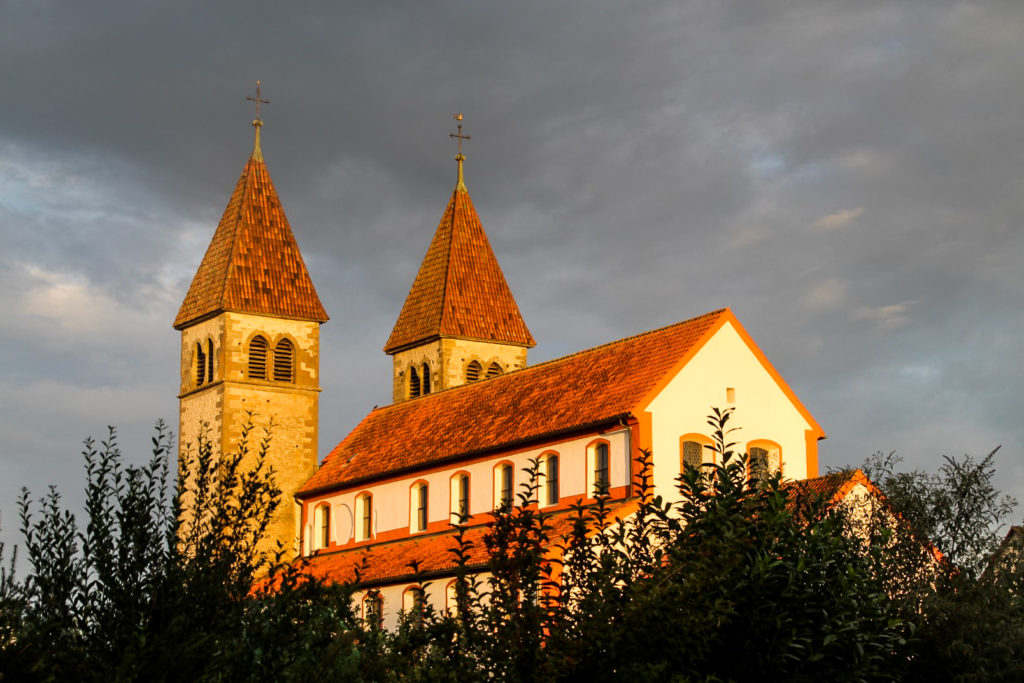
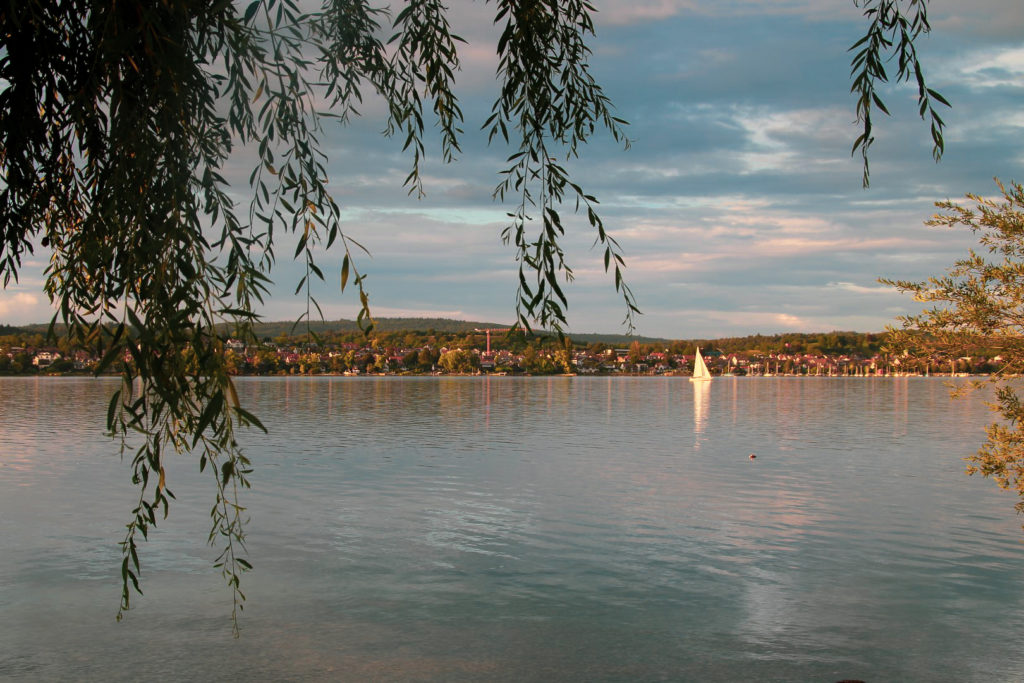
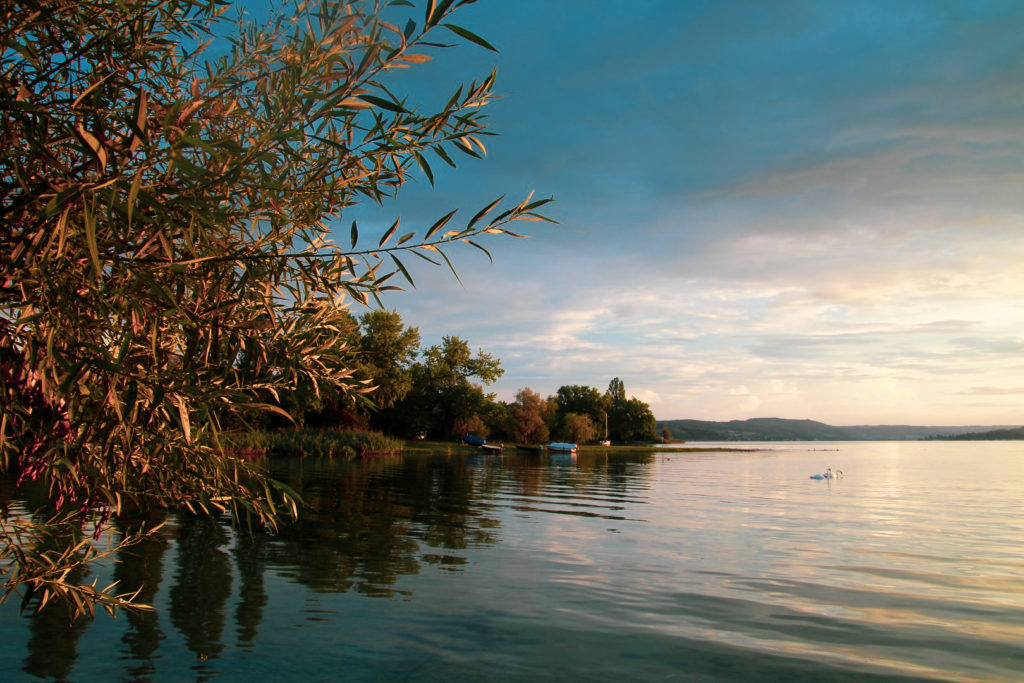
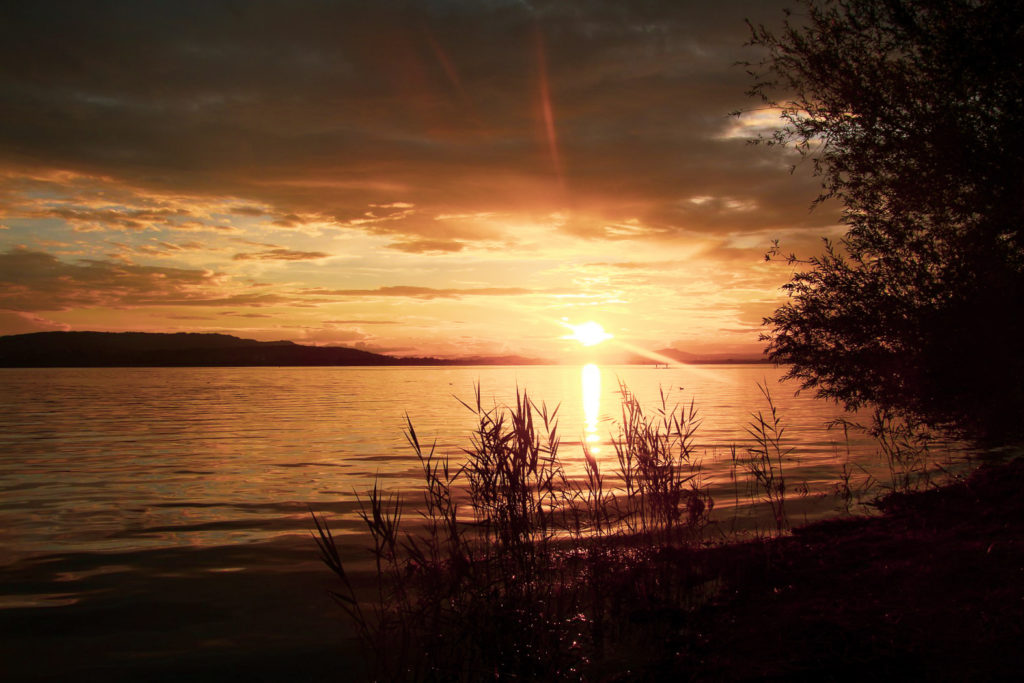
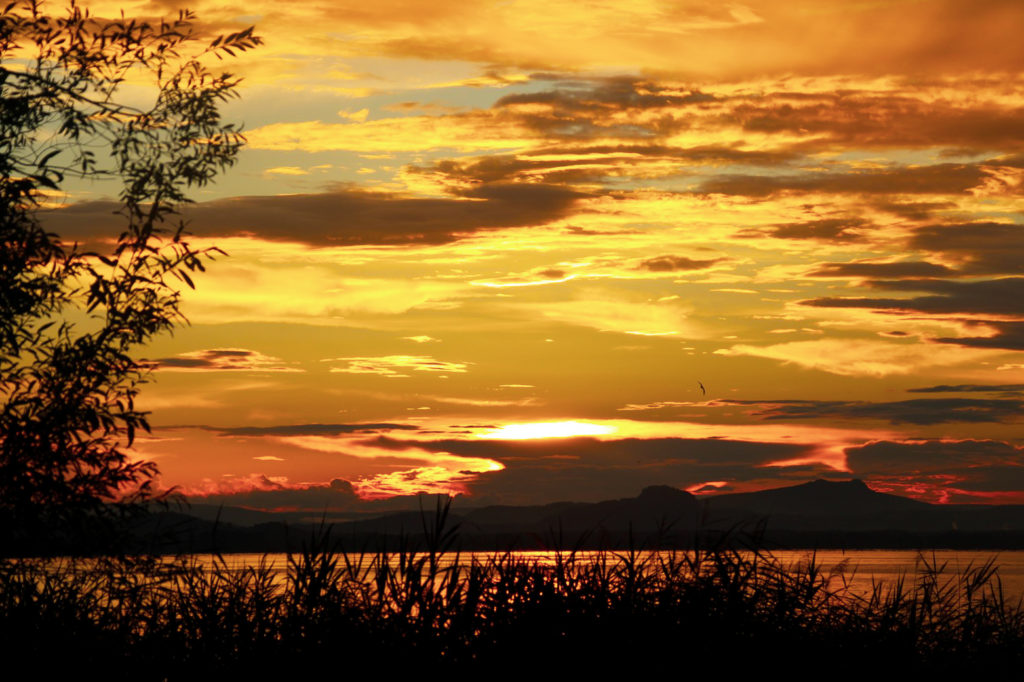
Church sightseeing on Reichenau Island
I let myself sleep in without an alarm and woke up fully rested at 9 AM to a cloudy sky and nice cool temperatures, just the way I like it. Instead of driving to my next destination, I decided to spend the morning walking as two of Reichenau’s three churches were just 1 km from the parking lot, in opposite directions.
I started at the church I’d seen the night before, the Basilica of Sts. Peter and Paul, which is a Catholic church of Romanesque style. The first church on this site was built in 799 AD and dedicated to St. Peter. It was richly adorned with murals all over the interior, but unfortuantely, two fires destroyed the church around 1080 AD. The basilica that stands today was built on the foundations of the old church and with the original measurements, completed in 1134 AD, and much of the interior was reconstructed in the mid-18th century.

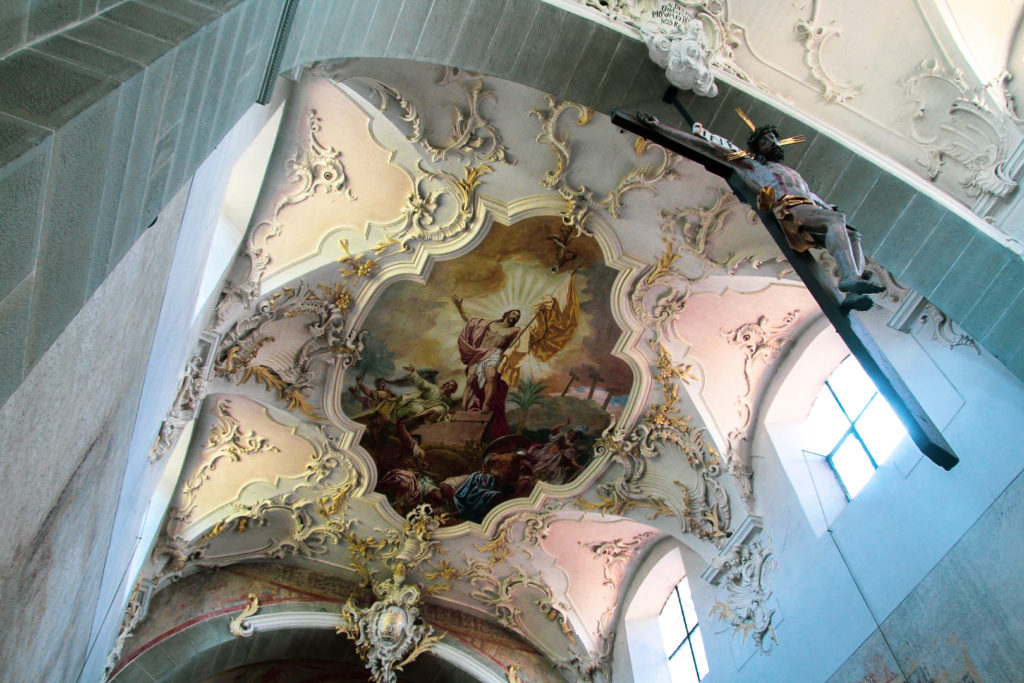
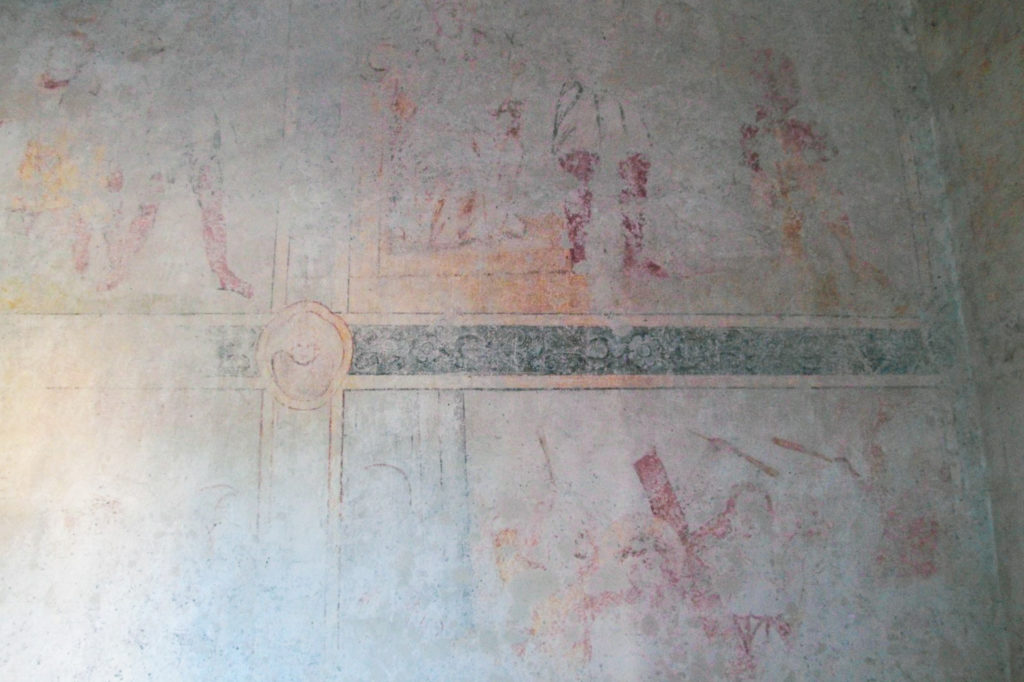
The sun had come out while I was in the church so I had to return to the car to change into summer clothes and put on sunscreen before I could continue my walk along the coast to the next church, the Minster of St. Maria and Markus.
This Romanesque-Gothic Catholic church is located in the centre of the monastic island, and is a former Benedictine monastery church, built on the site of a wooden monastery church from 724 AD. It’s the largest of the three Romanesque churches on the island, but while the exterior is gorgeous, I found the interior less impressive than the other two due to the general lack of murals. The best part is the surrounding town which features several large pastel half-timbered cottages.
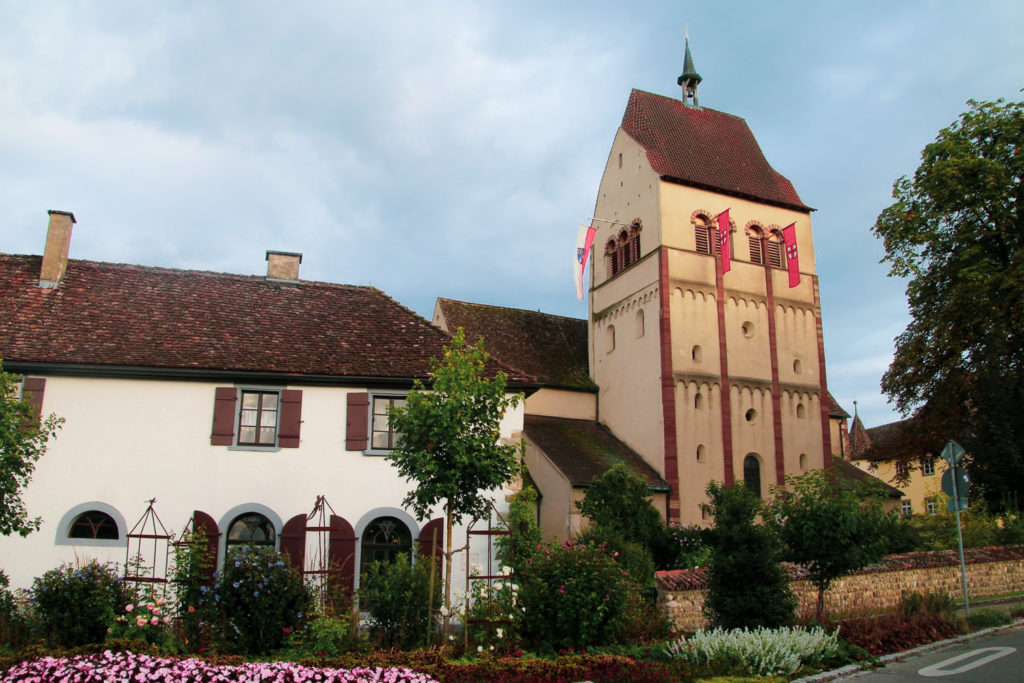
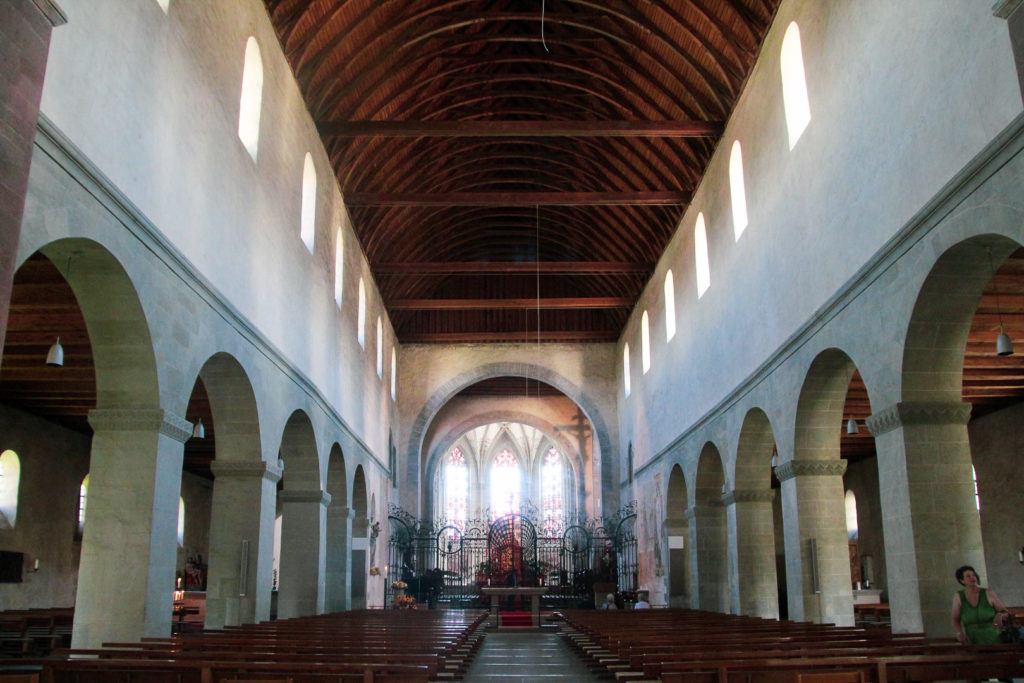
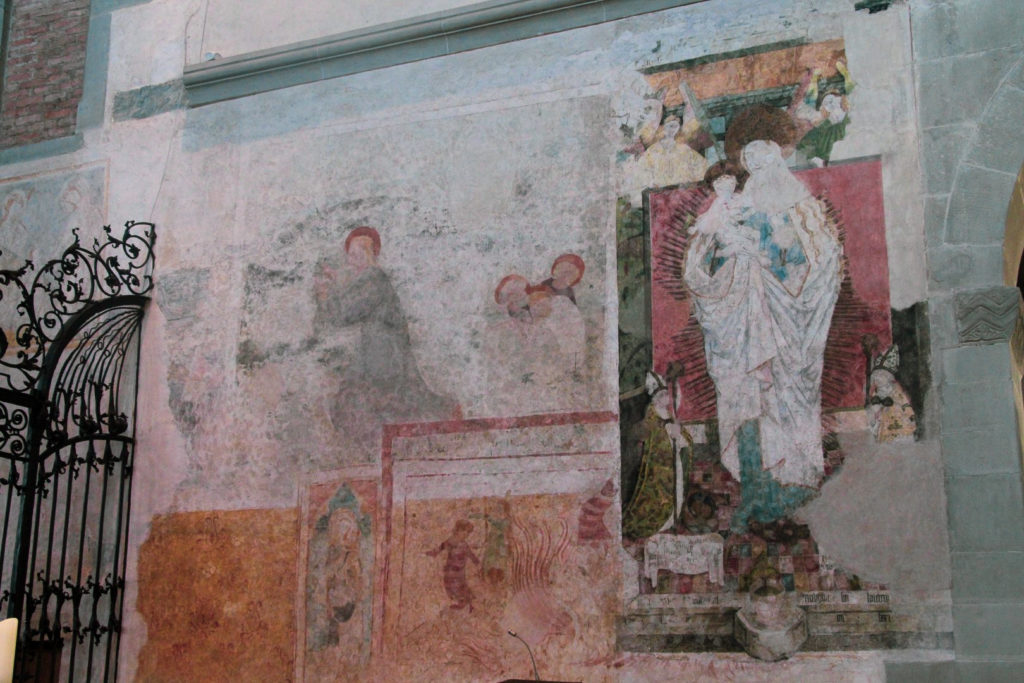
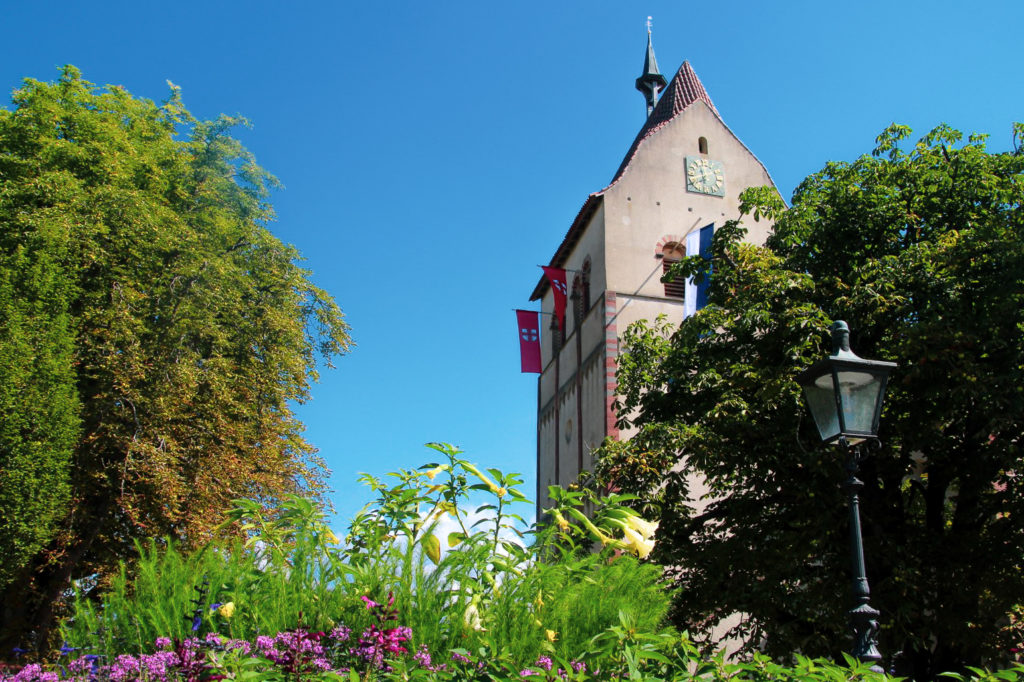
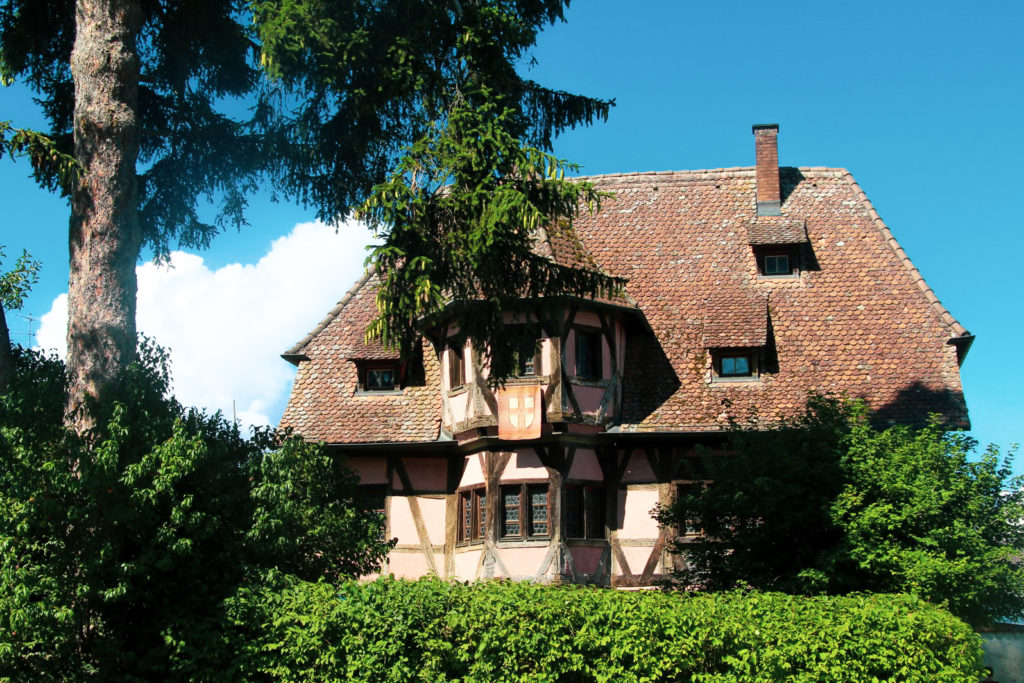
I headed back to the car and started my drive out of the island. The last of the three churches, the Church of St. George, was on my way, so I made a quick stop there before leaving the island.
Just like the other two, this church is Romanesque Catholic and was once part of the Benedictine monastery. It was built in the late 9th century to house the head of St. George, which was gifted to the church from Pope Gregory II in 896 AD.
The church features the most impressive murals that depict Biblical stories including the miracles of Christ. They were painted in the 10th century and are the only preserved complete set of murals north of the Alps from before the 11th century! When I was there, one side of the church interior was under renovation which blocked the murals, but it was still possible to see the impressive murals on the other side!
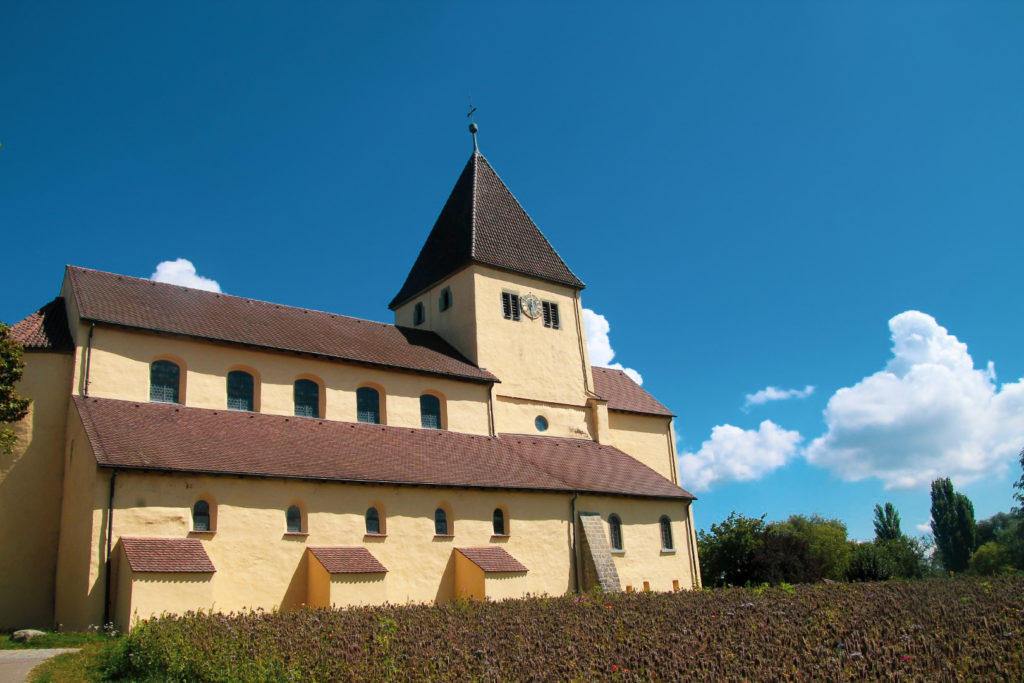
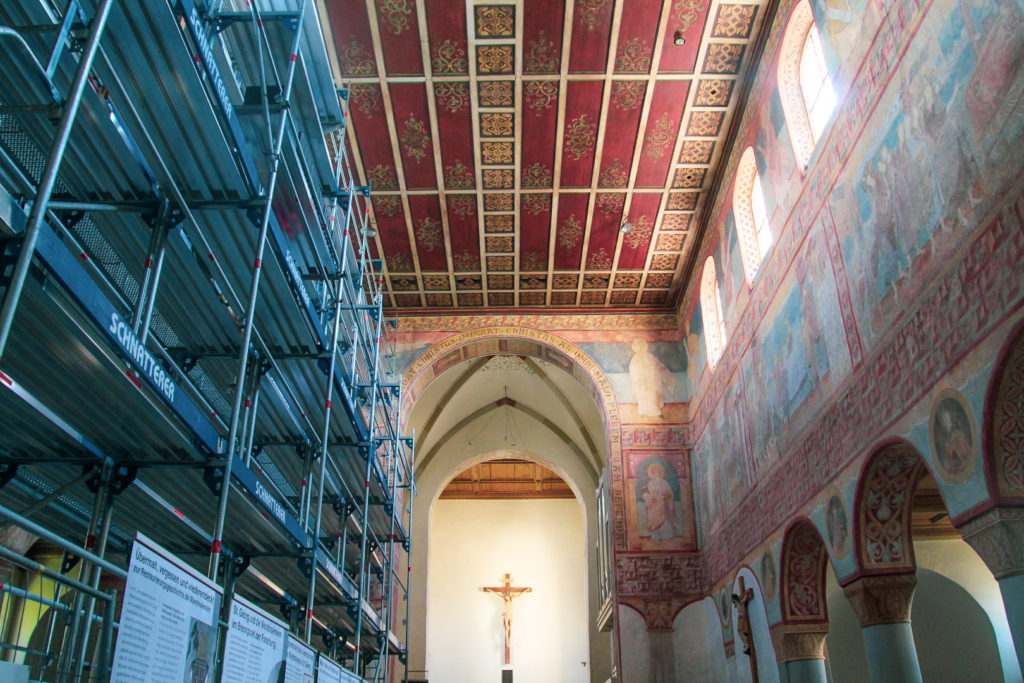
To Konstanz, a city with a geographical twist
After my third and last church visit, I left Reichenau Island behind and drove to the last place on the banks of Lake Constance that I wanted to see, the city of Konstanz. It’s a university city with around 83,000 inhabitants, and it has a gorgeous medieval city centre which is well worth a visit – and a nice place to grab lunch!
But my visit was mainly due to the geographical oddity of the city centre. Part of the city centre is actually a pene-exclave, which is cut off from the rest of the city and the rest of Germany by the Rhine, and bordered only by Switzerland! There’s just no way I can pass up an interesting geographical oddity!
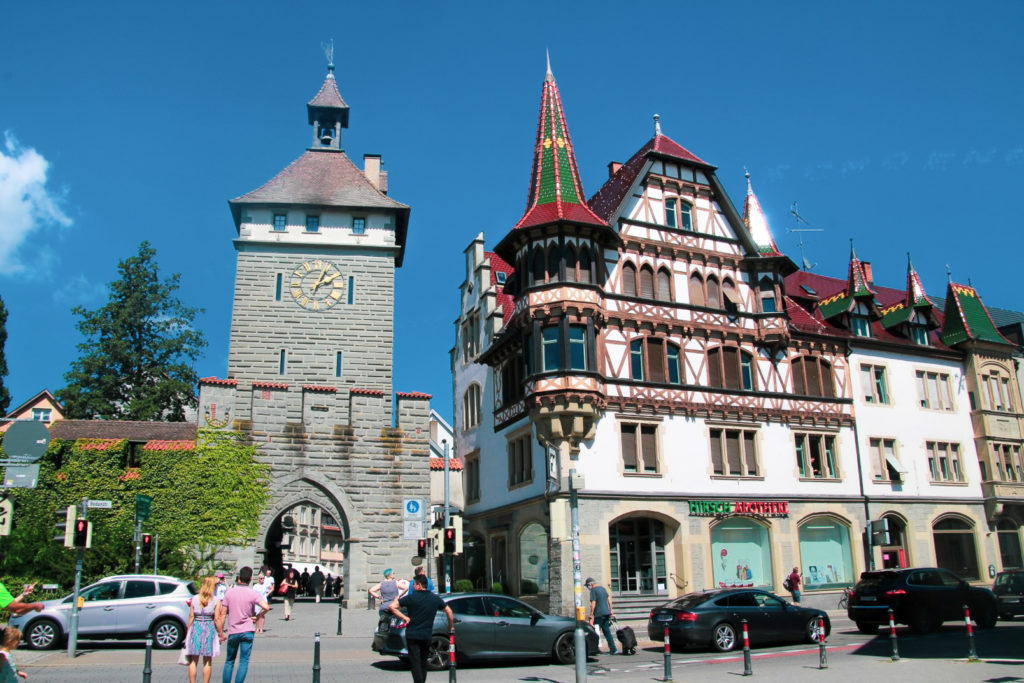
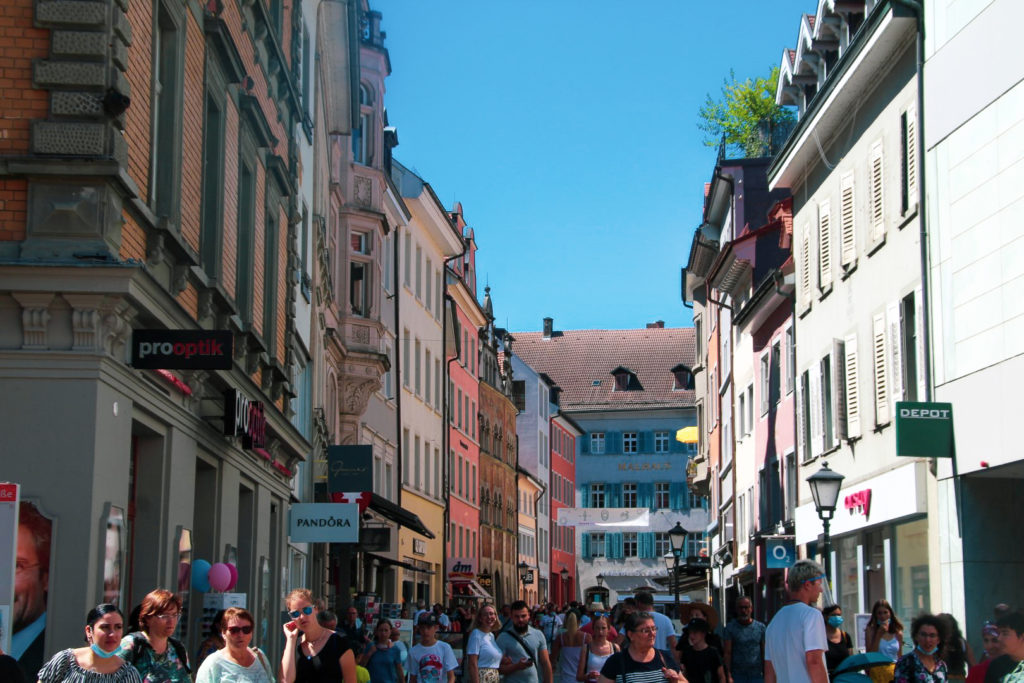
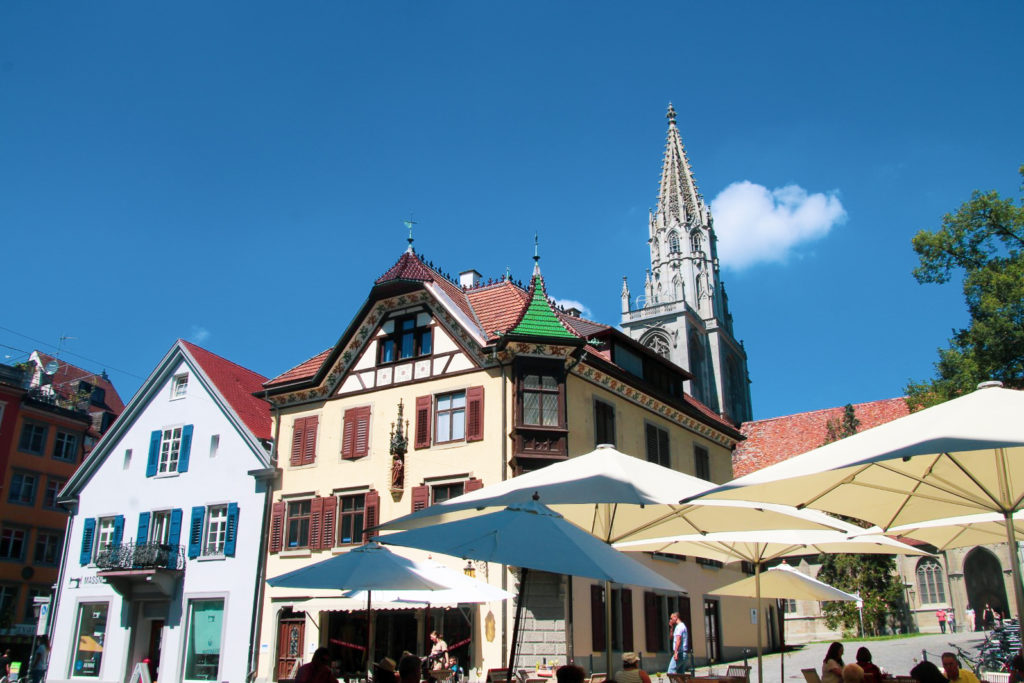

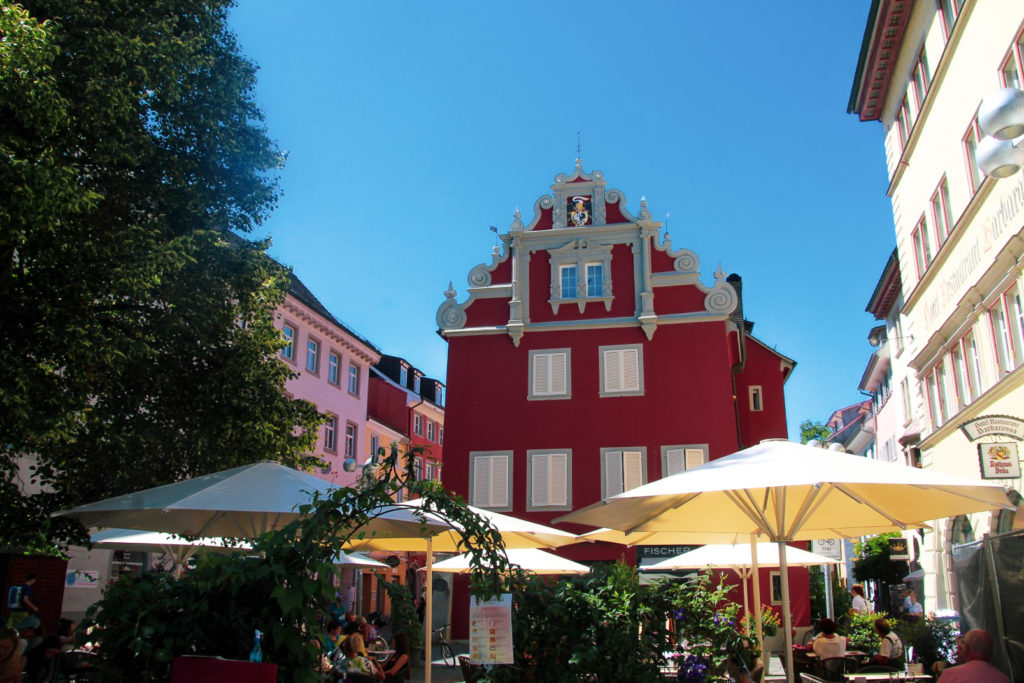
Since I was already on the Swiss side of the Rhine, I decided to drive into Switzerland next – my first time ever in the country! But more about that in my next post!
Leave a Comment
Pingback: A brief visit to Switzerland and the German exclave of Büsingen – Northtrotter on 30/03/2021
Pingback: An odd world: Uncovering the border complexities of the Alps – Northtrotter on 30/03/2021
Pingback: The Land of a Thousand Lakes: A summer hike in Northern Germany – Northtrotter on 30/03/2021

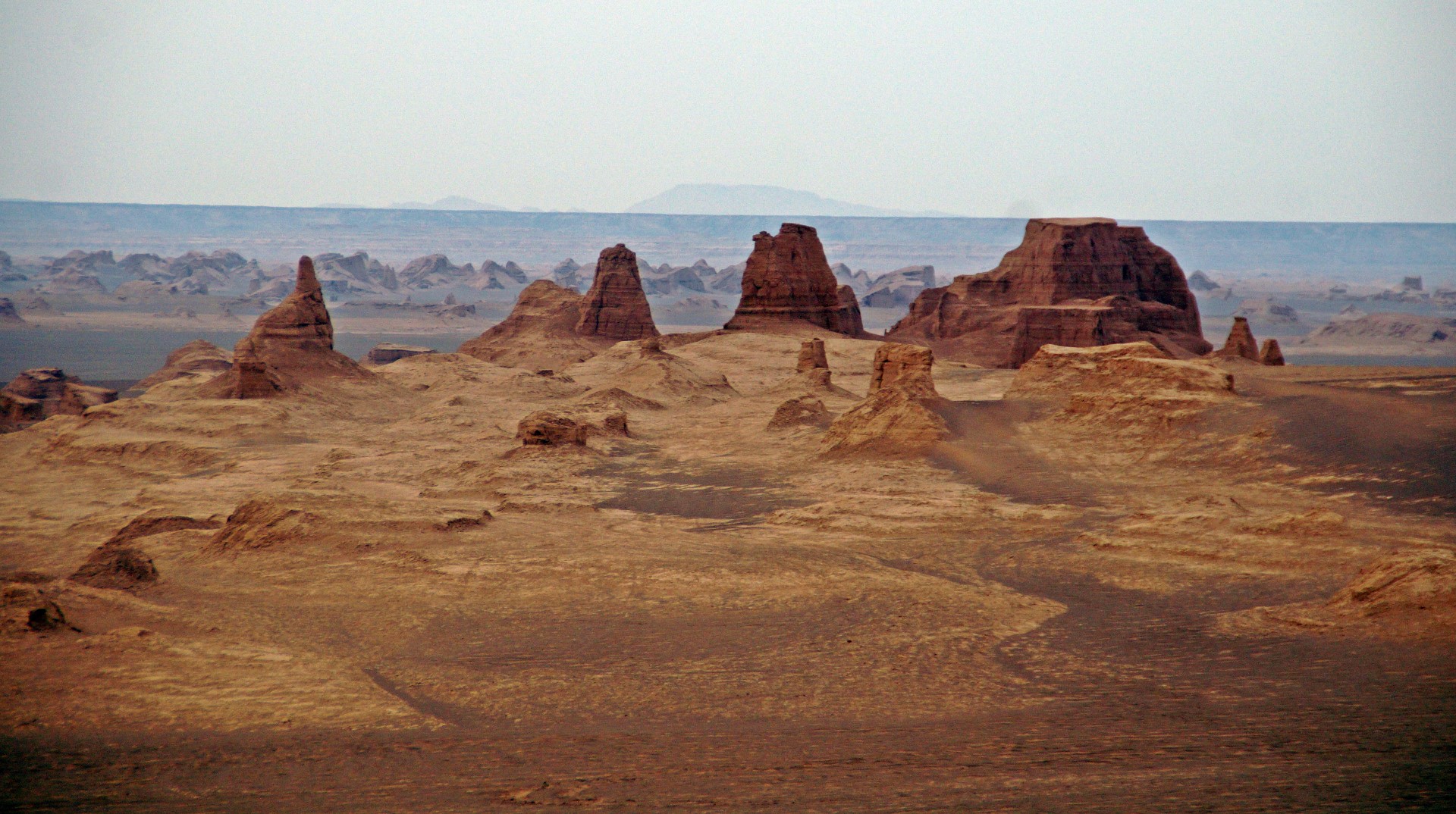
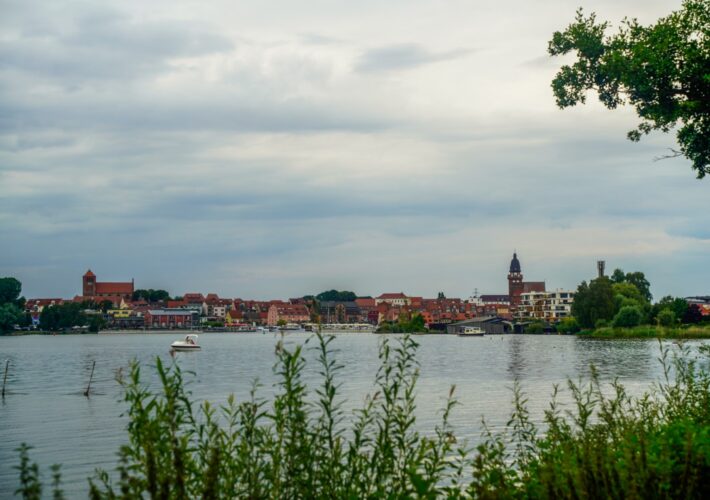
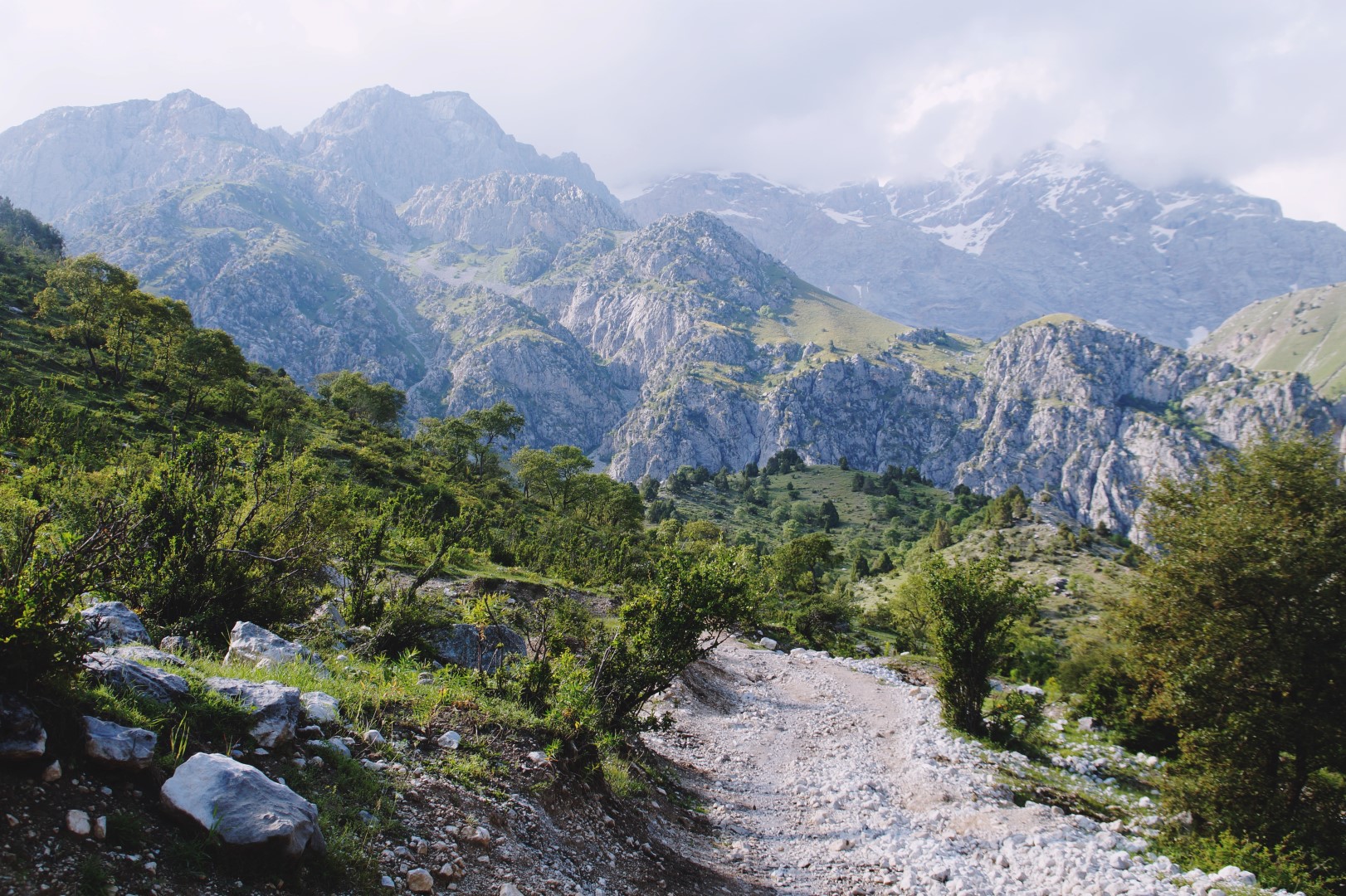

3 COMMENTS